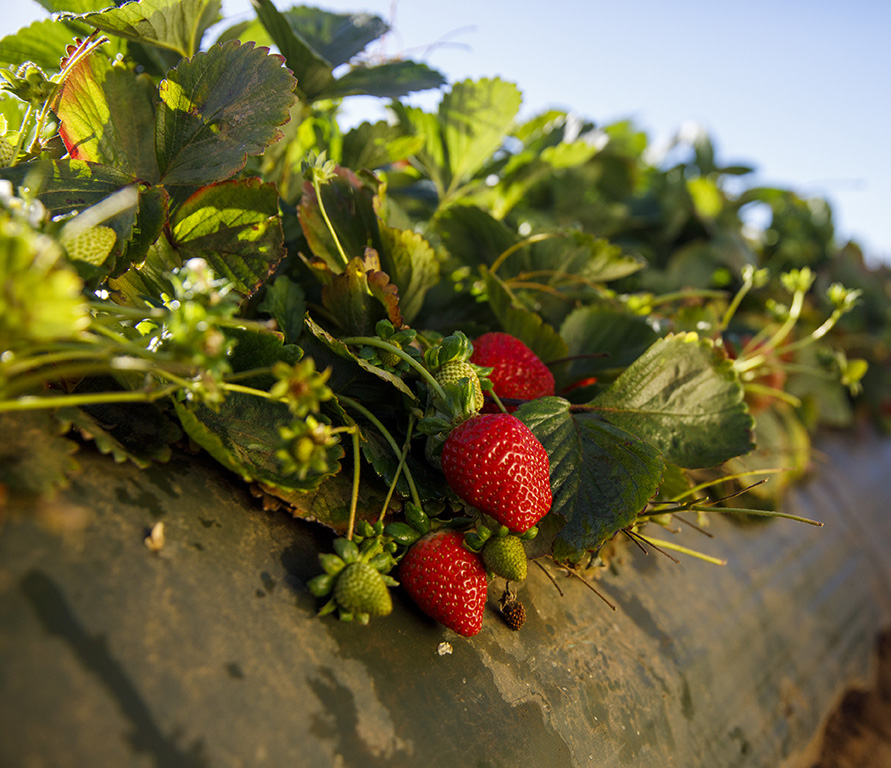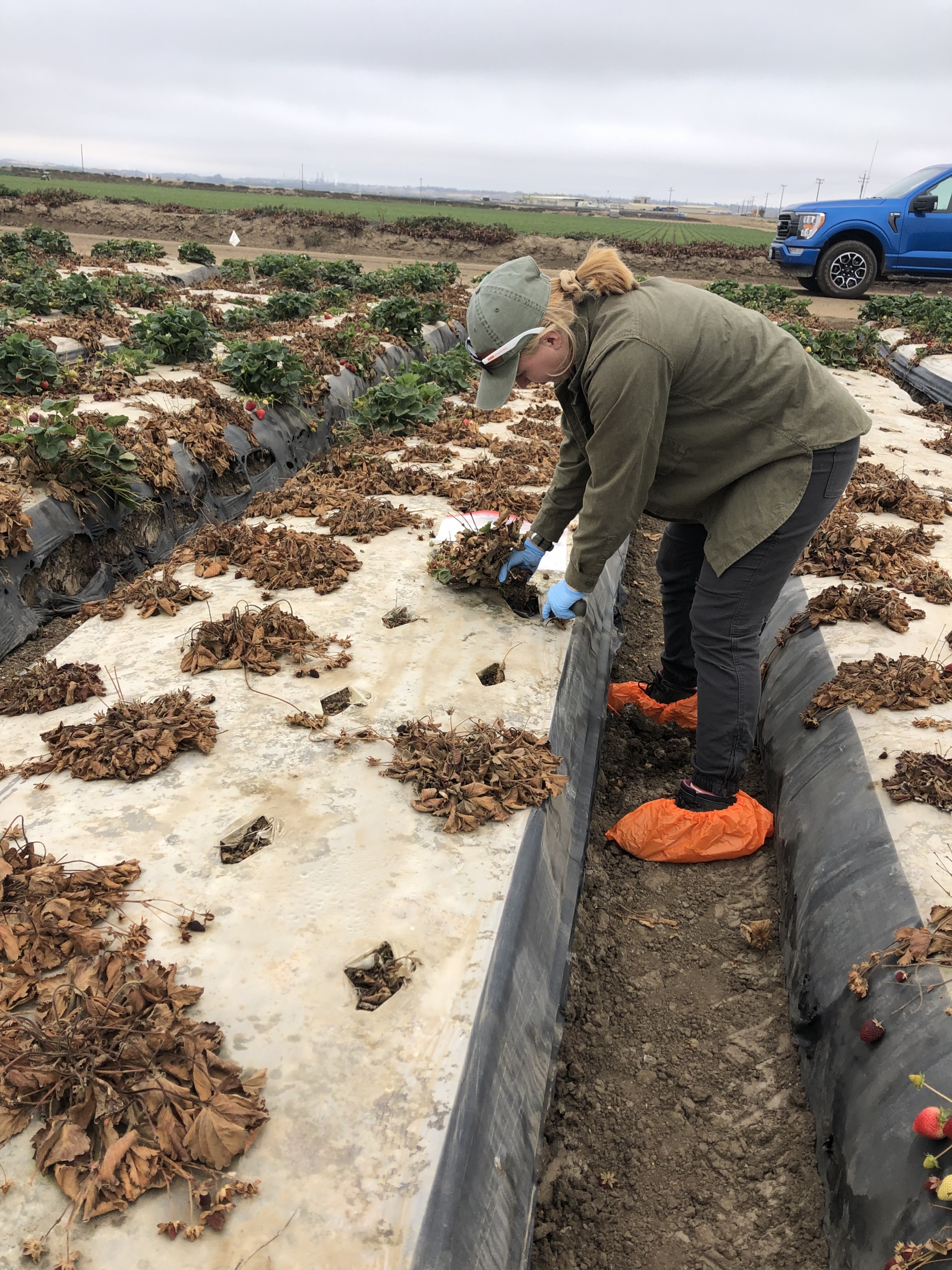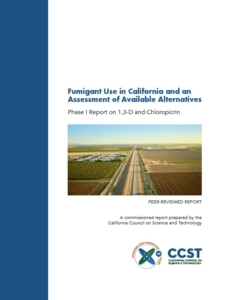

California farmers have a legacy of identifying and implementing progressive and innovative farming practices. This includes looking for new and alternative ways to control soil pests and diseases that can devastate so many California crops.
Fumigants and their alternatives are studied worldwide with a significant portion of that work conducted in California. According to a March 2025 report commissioned by the California Department of Pesticide Regulation (CDPR) and conducted by the California Council for Science and Technology (CCST), more than $100 million has been spent to identify fumigation alternatives.
The CCST report titled, “Fumigant Use in California and an Assessment of Available Alternatives,” found that “no currently available alternatives to 1,3-D and chloropicrin would work as a universal replacement for these fumigants.” (1,3-D and chloropicrin are the most commonly used fumigants in agriculture and are often used in combination for improved efficacy. Click here for more information on why farmers use fumigants.
The CCST concluded that more research is needed to support effective, feasible and readily available approaches for soil pest and disease management.
It should be noted that the CCST study confirms a previous analysis of fumigant alternatives which was also conducted in conjunction with CDPR and completed in 2013.
Click here to learn more about the CCST and its mission.
FAQ
What alternative soil pest and disease control strategies have been studied?
According to the CCST report, each alternative practice varies by the crop-pest combinations, scale of use, effectiveness and duration, yield effects, associated costs, additional requirements for use, availability, ease, and reliability. All these alternatives are practiced to some degree in specific crops and locations.
The CCST report evaluated the following alternatives, which have been researched over the last 20-plus years:
Other fumigants, non-fumigant chemical pesticides: Non-fumigant pesticides are unlikely to match the broad-spectrum soil pest control of 1,3-D and chloropicrin unless used in combination or with other pest control measures. Research is needed to determine the pesticide application, environmental, pest, and crop variables that affect pest inactivation and influence yield outcomes.
Anaerobic soil disinfestation (ASD) and biosolarization: This involves incorporation of organic matter into moist soil and covering the soil with tarps. The tarps limit oxygen diffusion into the soil promoting anaerobic activity by microorganisms in the soil as they digest the organic matter amendments. Such fermentation in the soil can produce biochemicals with pesticidal activity which are retained in the soil by the tarps.
Under certain and limited conditions, ASD and biosolarization can match the pest control and yield benefits of fumigation. These conditions are related to weather and climate, cropping system and soil amendments. The types and levels of organic matter amendments used are key factors in achieving broad spectrum pest control on par with fumigation. These also factor heavily into the high cost and complexity of ASD implementation, which limit widespread adoption on commercial farms.
Solarization: During solarization, the farm ground is flattened, watered and then covered with clear tarps with the edges buried. Given its complete reliance on weather and climate conditions to achieve soil temperatures required for broad spectrum soil pest control, solarization will likely only be a possible fumigation alternative in cropping systems and regions that have a fallow period during several weeks of sustained hot, dry conditions.
Biologically derived pesticides and biocontrol agents: Biopesticides refer to biologically derived pesticidal compounds and biocontrol agents. There are biologically derived pesticide and biocontrol agent products on the market that contain active ingredients shown in laboratory, potted plant or field studies to inhibit major pathogens and nematodes typically controlled through fumigation. However, there is little evidence that they are currently used for soil pest control in commercial agriculture. The costs of using biologically derived pesticides and biocontrol agents at a scale for soil pest control are not well characterized.
Resistant varieties and rootstocks: Various cultivars and species within a given plant genus can have different resistances to soil pests and pathogens. Resistance can be enhanced through breeding or genetic modification. Disease-resistant plant, tree and vine varieties have been a mainstay of disease management long before fumigation was developed. Recent advances in breeding and genetics have improved this method of disease control. However, these varieties and rootstocks do not cover the full range of soil pests that are controlled through fumigation with 1,3-D and chloropicrin.
Steam treatment: Steam treatment of soil uses saturated steam as a heating medium to raise the soil temperature in the root zone with the goal of pasteurizing the soil to eliminate pests and pathogens. Specialized equipment is necessary to apply steam to the soil. Steam treatment can deliver broad spectrum soil pest control but the reliance on specialized equipment, limited knowledge of heating depth and slow treatment times for a single application present barriers to adoption.
CCST researchers also looked at cover crop and crop rotation. These practices have been commonly used for years in California farming systems to enhance and protect soil health.
Who is funding research into alternatives?
While many farm groups and government agencies have funded research to identify alternatives, the strawberry industry through the California Strawberry Commission (CSC) has invested millions of dollars over two-plus decades, which is more than any other farm group in the world. The CSC is recognized for its years of research into soil health, fumigation, fumigation alternatives and organic production methods. The CSC has worked cooperatively with CDPR, U.S. Department of Agriculture (USDA), University of California, University of California Cooperative Extension and others to advance its research agenda.
In 2013, the CSC and Cal Poly San Luis Obispo announced a partnership to establish the Cal Poly Strawberry Center to increase the sustainability of the California strawberry industry through research, which includes soil-borne pests and diseases. Research projects at the Strawberry Center are funded through the CSC as well as competitive grants from other government sources.
The Director of the Cal Poly Strawberry Center, Dr. Gerald Holmes, served as co-chair of the four-member CCST Steering Committee that studied fumigation alternatives.
Learn more about the Cal Poly Strawberry Center here. Learn more about the CSC here.


